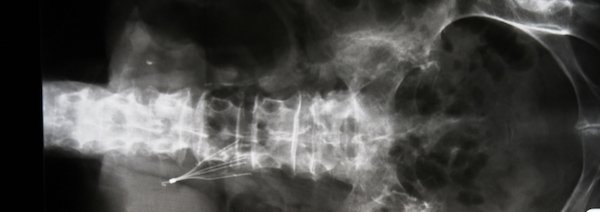IVC filter indications are valid medical reasons to implant an IVC filter in a patient, or to remove one that has already been implanted. If there are enough indications to make a decision about an IVC filter, and few contraindications that highlight the risks of the decision, then a doctor is supposed to recommend the IVC procedure. Once it has been implanted, though, there are risks that can lead to serious injuries and a potential IVC filter lawsuit.

1. Indications for implanting an IVC filter
There are several indications that doctors look for when they are trying to decide if a patient needs or could benefit from an IVC filter. According to one study,1 the most common indications for implanting an IVC filter were:
- Trauma,
- Malignancy,
- Bleeding from anticoagulant treatment or blood thinners,
- Cerebral hemorrhage,
- Gastrointestinal tract bleeding,
- Pulmonary embolism,
- Surgery preparation for patients with a history of venous thromboembolism,
- Difficulties in anticoagulation, including after a surgery,
- Preventative care before a high-risk surgery,
- Hemorrhagic stroke,
- A patient’s failure to take blood thinning drugs, and
- Patients who have a high fall risk.
The study found that around half of the IVC filters were implanted in patients who had recently fallen or suffered a serious trauma.
Another study recommended IVC filters for the following indications2:
- Venous thromboembolism or deep vein thrombosis, a medical condition where a blood clot forms in the deep veins of the legs or arms and travels in the bloodstream,
- Recurring venous thromboembolism, even after anticoagulation therapy,
- Medical complications from anticoagulation therapy, and
- The discovery of large blood clots in the bloodstream.
Additionally, the study found that IVC filters were occasionally used for the following indications, but did not recommend using one:
- There is no risk of venous thromboembolism, but the patient cannot use anticoagulant therapy or drugs, and
- There is only a temporary risk of venous thromboembolism, like during a surgery or after a trauma.
2. Indications for removing an IVC filter
Many of the IVC filters that are implanted are not designed to be permanent fixtures. In fact, the U.S. Food and Drug Administration (FDA) has recommended that IVC filters be removed as soon as the risks for a pulmonary embolism have passed.3 One medical study found that the risks of an implanted IVC filter tended to begin to outweigh the benefits between 29 and 54 days after it was implanted in a patient.4
When doctors face the decision of whether to remove an IVC filter, they look for the following indications that suggest a removal is wise5:
- Anticoagulation therapy is working,
- The IVC filter that was implanted was a temporary one and it has been two months or longer since it was implanted,
- The risks for a significant pulmonary embolism have declined,
- The patient’s life expectancy is longer than six months, and
- The risks of medical complications while retrieving the IVC filter are low.
One of the primary factors that doctors use is the length of time since a temporary IVC filter was implanted. The longer an IVC filter remains in a patient’s inferior vena cava vein, the more likely it is to get embedded or to perforate the vein. Removing the filter once this has happened is far more difficult and more likely to cause serious medical complications.
References:
- Sarosiek S, Crowther M, Sloan JM, “Indications, Complications, and Management of Inferior Vena Cava FiltersThe Experience in 952 Patients at an Academic Hospital With a Level I Trauma Center,” JAMA Internal Medicine 173(7):513-7 (April 8, 2013).
- Kaufman J, et al., “Guidelines for the use of retrievable and convertible vena cava filters: report from the Society of Interventional Radiology multidisciplinary consensus conference,” Journal of Vascular and Interventional Radiology 17(3):449-59 (March 2006).
- U.S. Food and Drug Administration, “Removing Retrievable Inferior Vena Cava Filters: FDA Safety Communication” (May 6, 2014).
- Morales JP, et al., “Decision analysis of retrievable inferior vena cava filters in patients without pulmonary embolism,” Journal of Vascular Surgery 1(4):376-84 (October 2013).
- See note 2.
